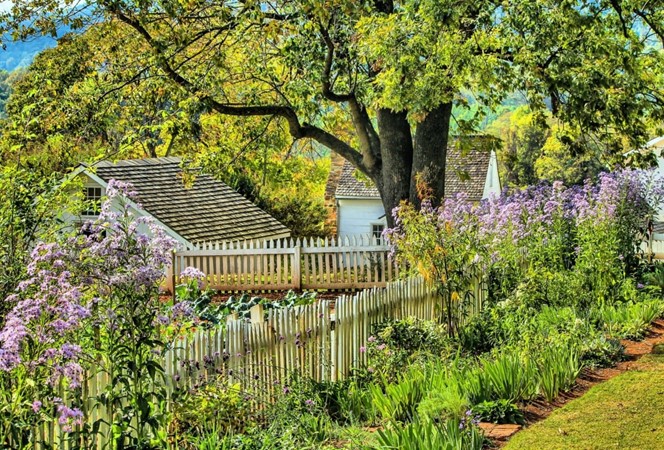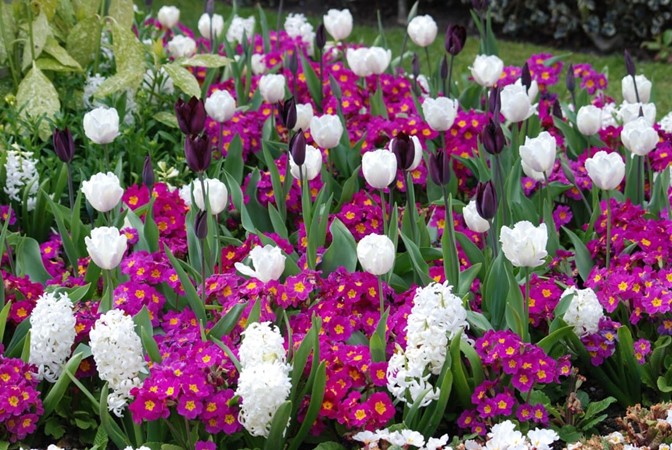As the seasons turn from winter to spring, you may have some home maintenance tasks to accomplish. If you live somewhere like Wisconsin where the winters can be long and frigid, getting your yard clean and ready may be at the top of your list.
It’s finally time to pull those weeds, plant new flowers, prune your shrubs and trees, and get your home looking its very best for the sunny months ahead. If you are ready to start on your outdoor to-do list, but don’t know where to start, you came to the right place. We gathered tips from experts to help you prepare your yard for spring.

1. Don’t forget to water your trees, plants, and lawn
Did you know that trees, shrubs, and grasses start stretching their roots into the soil before any evidence of growth appears above ground? For this reason, be sure to drag out the hoses and water trees, garden plants, and even your lawn if precipitation is light and the ground is dry. Winter watering will help kick your landscape off to a healthy start. –Happy Trees
2. Add outdoor planters to your front porch
Welcome the arrival of spring with container gardens planted with beautiful spring flowers. Adding outdoor planters to your front porch will dramatically increase your curb appeal. This attention to detail is an inexpensive way to create a fabulous and lasting first impression. –Adorn Planters
3. Think about the pollinators
Remember that flowering weeds like dandelions are an important early food source for honeybees and that some “wild” areas in your landscape can provide season-long support for a variety of native pollinators. –Masterson’s Garden Center
4. Make a plan for planting, soil prep, and cleaning
Planning, soil prep, and cleaning are the keys to an upcoming gardening season. Have a good plan. Visit your local gardening experts for advice and recommendations on which plants/flowers perform best in your area, region, and hardy zones. It is best to shop locally. Clean and sharpen your garden tools and equipment for maximum performance and safety. Also, clean out your beds of weeds, old plants, and debris. -Brian J. Wheat, Owner, Lafayette Florist Gift Shop and Garden Center
5. Increase your curb appeal with shrubs
One easy way to increase curb appeal is to use medium-sized shrubs with shallow root systems to plant in front of your home’s foundation. Known as “house huggers.” These shrubs hide unsightly cement, give your home the appearance of being “grounded” in the landscape, and act as a great backdrop for smaller flowering perennials. This creates layers of visual interest and charm that frame your home’s best qualities. We recommend Boxwood, Inkberry, Deutzia, Weigela, Viburnum, Juniper, or Spruce for the job.
6. Use your garden to support local wildlife
If you want your lawn and garden to support local wildlife such as birds, butterflies, and pollinators, consider planting native plants that encourage these beautiful visitors. Expanding your gardens to include more native plant varieties and increasing your garden’s footprint can results in less lawn, meaning, less lawn maintenance. –American Native Plants

7. Turn your yard into a flowering bee lawn
Pollinator populations are plummeting worldwide due to habitat loss, declining food sources, and pesticide use. The good news is that planting native flowers helps local bees, butterflies, and moths, and turning your entire yard into a flowering bee lawn really helps. You can mow and walk on a bee lawn just like turfgrass, and you’ll be serving up a buffet of nectar and pollen for foraging wild and honey bees. –Minnesota State Horticulture Society
8. When pruning your trees, follow these rules:
- The leaf is the tree’s food factory, so try not to remove more than 25% of leaves in any given pruning.
- How and where you make the pruning cut is much more important than when—winter, spring, summer, fall.
- Make smaller diameter cuts if possible. Trees seal over wounds (pruning cuts) by adding new growth, so smaller cuts close faster.
When in doubt, hire an arborist to inspect your trees and advise you on how to best care for your trees. –Cherokee Tree Care
9. Select plants that flourish in your climate
Maximize your yard’s potential by selecting plants that will flourish in your climate. Research your USDA growing zone before you shop. This will help you design a drought-tolerant, water-wise, or low-maintenance landscape ideal for your zone. – Alder & Oak plants Simple l Good l Plants
10. Cut back native perennials
What is the best spring care for the native perennials in your yard and garden? Woody perennials do best if they are cut back in late spring, leaving a good amount of stem intact, since that’s where the new growth will form. Most other native perennial wildflowers can be cut back to ground level soon after the snow melts. These dead stems and leaves have served their purpose over the winter months in providing cover and catching snow, which protects the roots from frost damage. Clearing out most of this dead matter in the spring will help the ground warm sooner, and make your garden look tidier. -Steve Sykora, Everwilde Farms
11. Keep a gardening journal
One of my favorite tips to get the garden ready for spring is to begin by reviewing your gardening journal from last year. This is a helpful way to plan for the coming season that enables you to review past weather patterns, frost dates, watering schedules, plot arrangements, and more. So you can get a jump on the coming season with a fine-tuned plan that reflects the unique ins and outs of your own gardening space. And if you don’t keep a gardening journal already, now’s a great time to start! –Gardener’s Path
12. Let the professionals help out
Prepare your outdoor space for dinner parties and good times and leave the nutrient-dense edible gardening to us! Soil is the soul of the food you grow, but a raised bed can be a real bummer. Planted Places did the work and now you don’t have to sacrifice soil. Come for the nutrients, stay for the yoga! Get Planted! –Planted Places
Originally Published on Redfin

